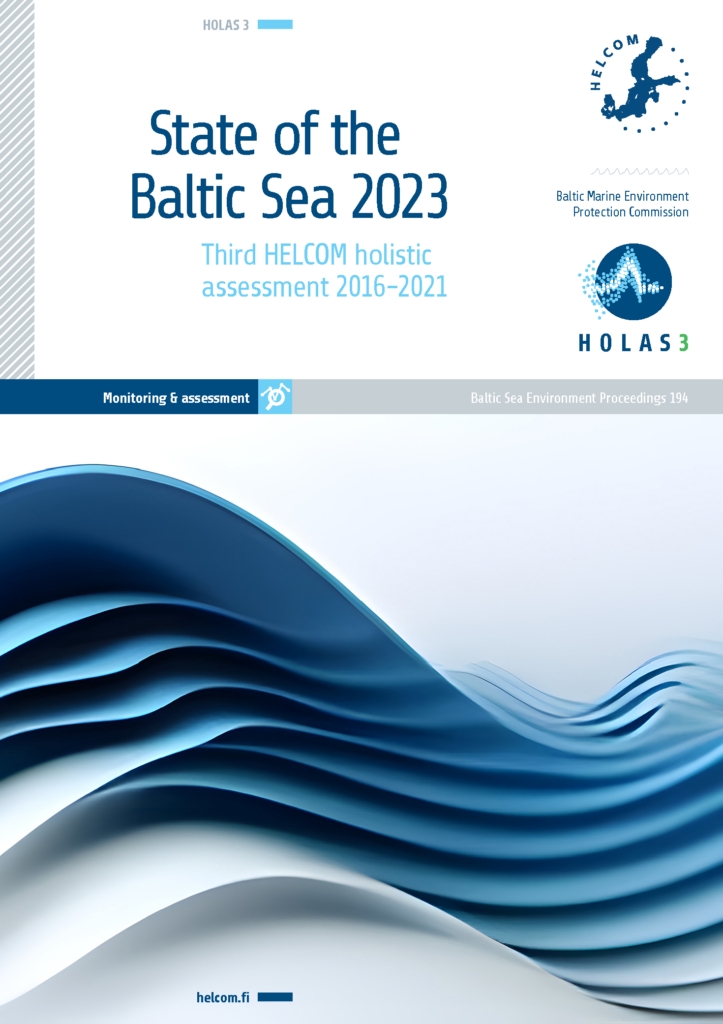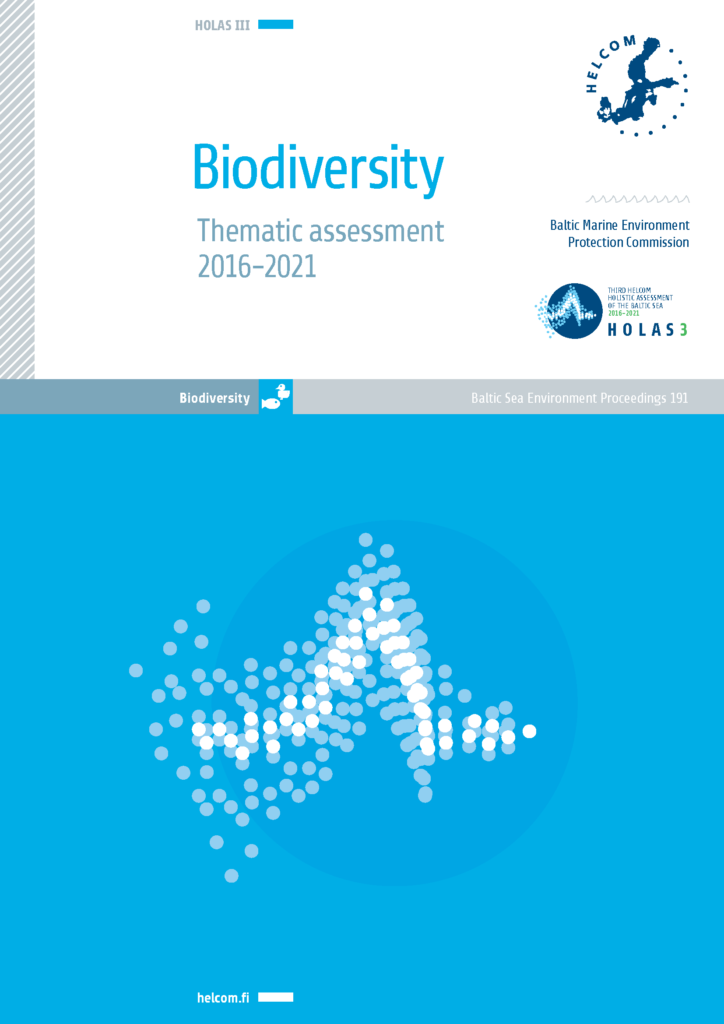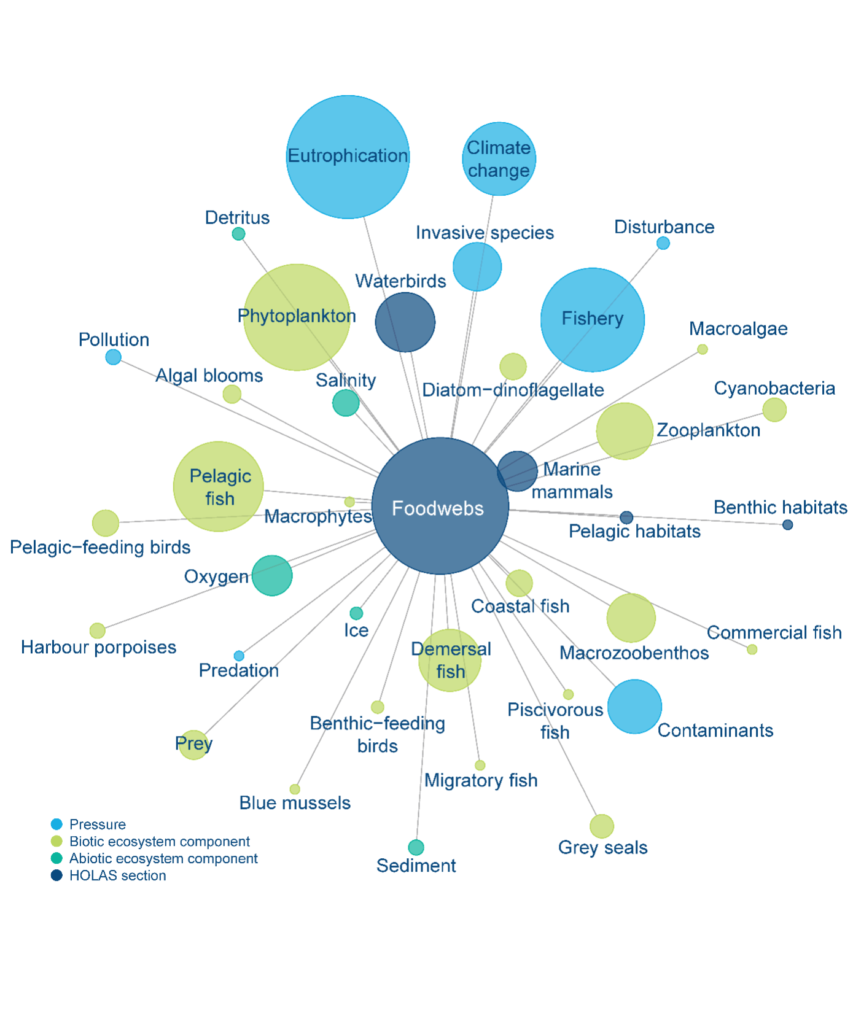FOOD WEBS
The status of food webs
Food webs represent the feeding relationships among species and populations (Figure 3.16). Understanding food webs is critical for comprehending key ecosystem interactions and the food/ energy flows that underpin ecosystem health and productivity. Impacts on the status of Baltic Sea food webs occur through effects on the species that interact within them, as these effects are mediated to other species and trophic guilds (Eero et al. 2021). Alterations in the structure of food webs influence their functions and ecosystem processes, such as ecosystem productivity, stability and resilience against future pressures. Available evidence shows that major changes in the abundance and biomass of species, driven by human pressures, have been associated with changes in the food webs of the Baltic Sea in recent times. Several examples of food web disruption and putative tipping points are cause for concern.
Why is this important?
Healthy food webs are fundamental to the functioning of the Baltic Sea ecosystem and its delivery of ecosystem services.
Food webs ensure the productivity and energy flow in the aquatic system, whereby energy produced by algae and plants is transferred to animals, supporting a diversity of zooplankton, benthic fauna, fish, marine mammals and waterbirds.
Food webs in good status can ensure the stability of ecosystem processes and the ecosystem’s resilience against current and future pressures, including climate change.

State of the Baltic Sea 2023 — The third HELCOM holistic assessment (HOLAS 3)
State of the Baltic Sea 2023 is a synthesis report that builds on, and integrates, results from a wide range of assessment products produced within the third HELCOM holistic assessment. Its role is to link information from the underpinning assessment products together, thus highlighting the holistic aspects. With this in mind, the summary report focuses on presenting the results and on an in-depth look at why we are seeing these results, providing over-arching context and analysis. The report helps develop a clearer picture of where we are and how things are connected, supporting coordinated and effective measures to strengthen the Baltic Sea environment.

Thematic assessment
Biodiversity
The thematic assessment report on the biodiversity status of the Baltic Sea (HELCOM 2023a) presents results from status assessments relating to biodiversity, based on HELCOM indicators, integrated assessments and regionally agreed data for the years 2016-2021. The assessment reveals improvements in spatial coverage compared to HOLAS II (2011-2016), incorporates new indicators and introduces novel topics. For the first time, trends for indicators and assessment results are compared across assessment periods.
However, further work remains to fill gaps in spatial coverage, improve precision of HELCOM indicators and to strengthen relevance to ecosystem-based management.


